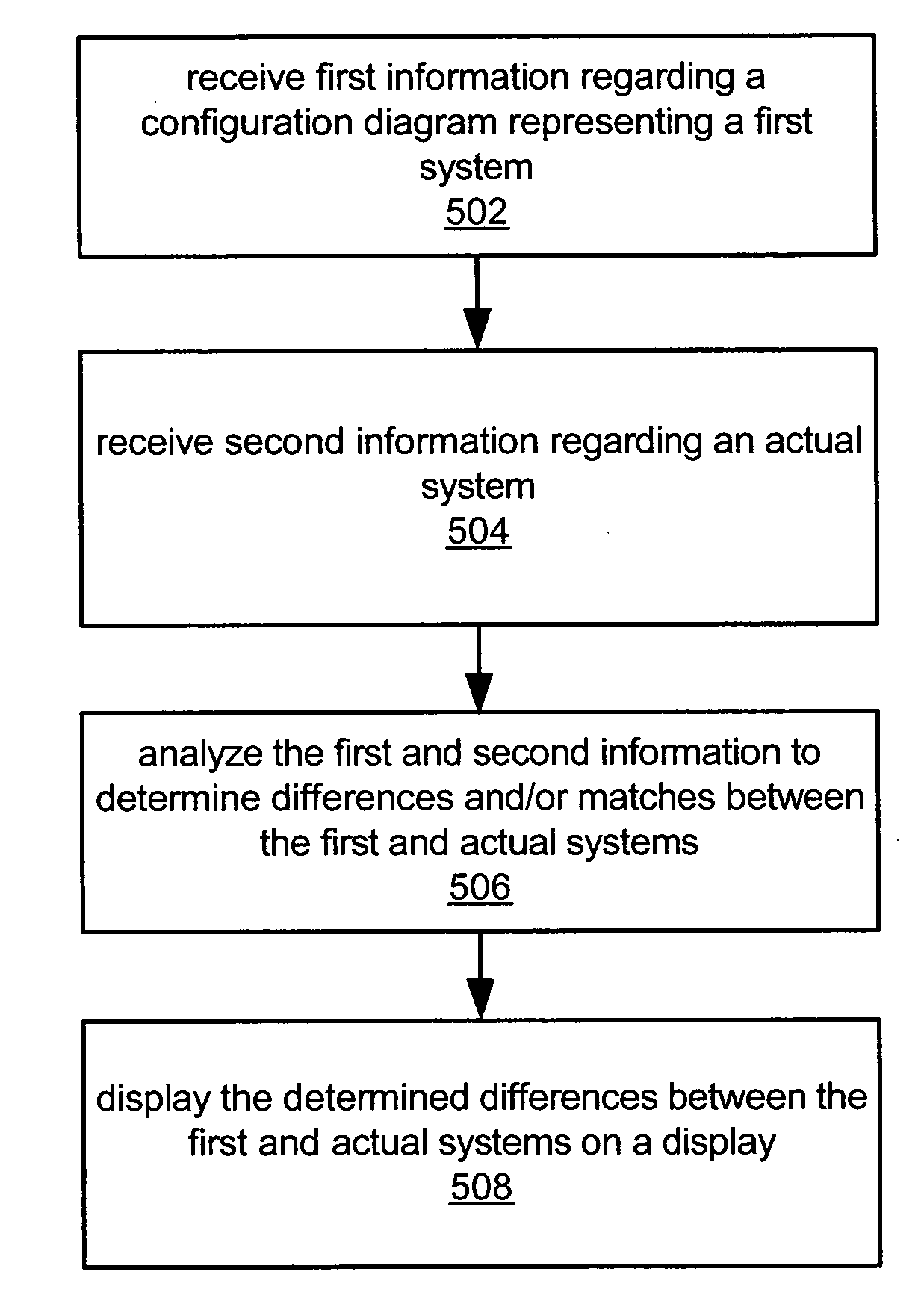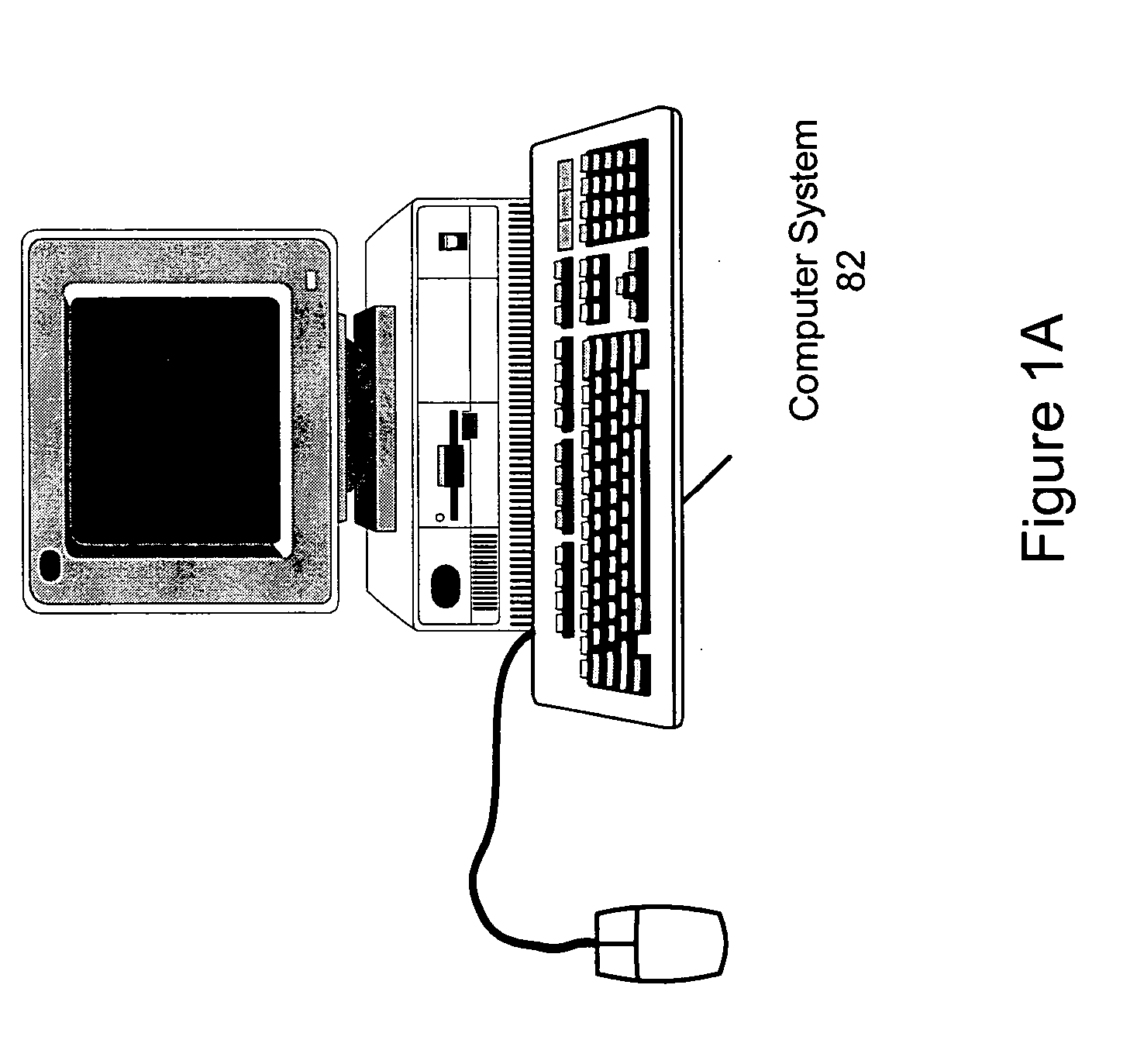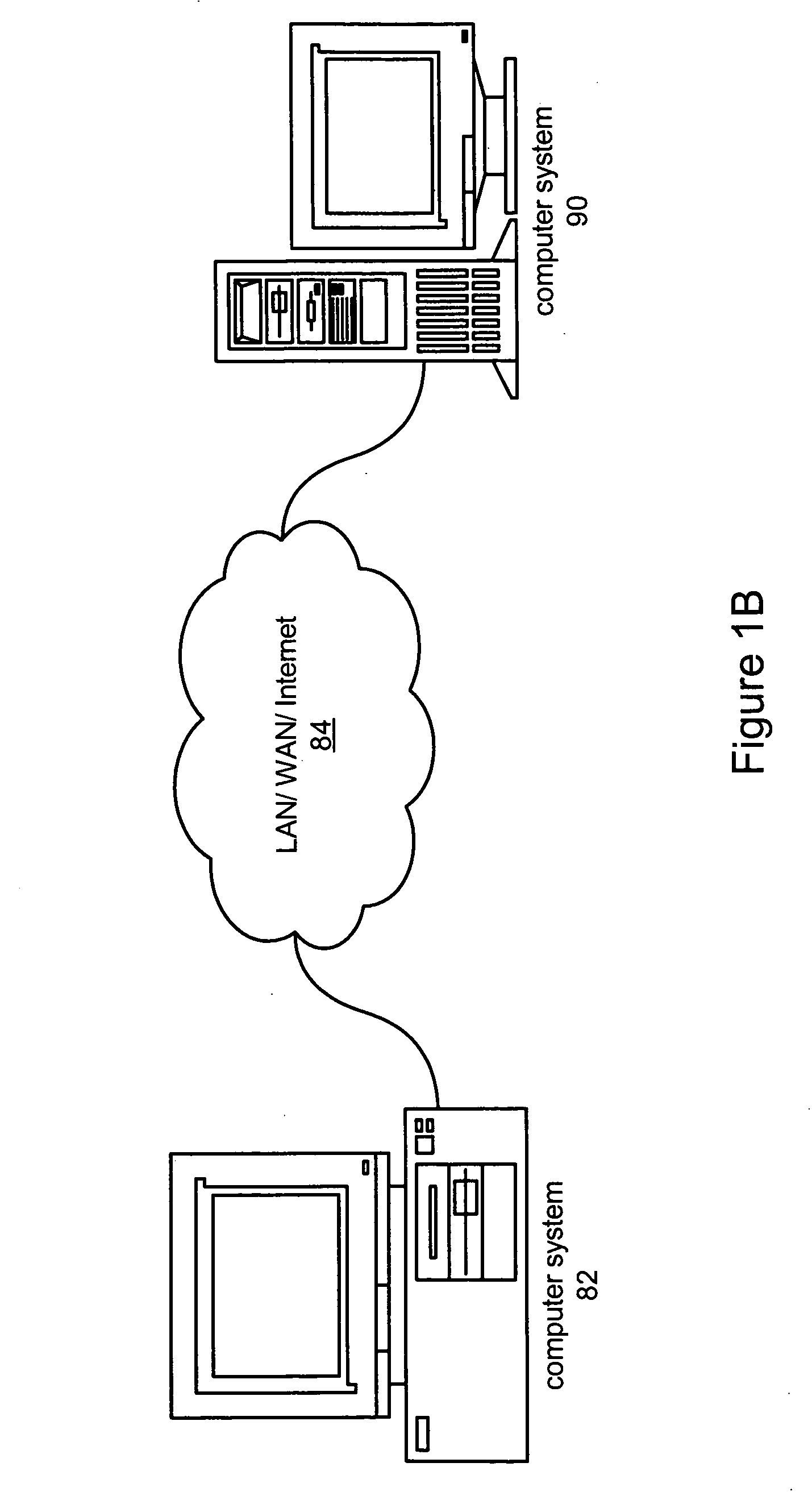[0026] In some embodiments, a merged configuration diagram may be generated representing a “merged” system comprising at least a subset of a union (in the set-theoretic sense) of the respective components of the first system and the actual system. In some embodiments, the merged configuration diagram may be generated as the configuration diagram and the actual system (or representation thereof) are traversed or walked, thus obviating any intermediate data structures, e.g., intermediate lists. For example, the configuration diagram and the actual system (or representation thereof, e.g., another configuration diagram) may be traversed at least partially to determine a common component or resource, and then both (diagram / system) may be traversed starting with the common component in each. The method may then walk the respective configuration diagrams (and / or representations, e.g., graphs, data structures, etc.), adding and connecting components in a new configuration diagram (the merged configuration diagram) corresponding to those encountered in the traversals of the first system and the actual system. Note that where matching components are encountered in the first system and the actual system, only one corresponding component may be added to the merged configuration diagram, thereby avoiding redundancies in the merged configuration diagram. Alternatively, the merged configuration diagram may be generated by adding to the configuration diagram of the first system.
[0031] For example, in one embodiment, software executing on a
client computer system, e.g. the users computer system, and / or software executing on a
server computer, e.g. coupled to the
client computer, may analyze the determined differences and may automatically initiate acquisition and / or purchase of the missing (one or more) components. In one embodiment, the software may automatically order the components without
user input, e.g., via the network (e.g.,
the Internet), for example, if the user's billing or
payment information (e.g.,
credit card number, credit account number, etc.) is already stored or available to the software. In other words, the system may comprise an e-commerce system that automatically (or at user
initiation) orders and purchases the needed components based on the determined differences. In other embodiments, the user may be presented with a GUI, e.g., displayed on the
client system and provided by the
server and / or the
client system, prompting the user for input regarding completion of the actual system. For example, the GUI may display the first configuration diagram, e.g., highlighting those components that are missing in the actual system, and may prompt the user with a “Complete the system?” message or equivalent. In response to a positive answer from the user, a search for and / or order of the missing components may then be performed. For example, one or more quotes for each missing component may be presented to the user, including, for example, cost, vendor, delivery times, and / or any other information useful for making a purchase decision, where the quotes may be retrieved from a
database, via a
network search engine, or any other source of quote information. As another example, the user may click on each of the missing components in the diagram, thereby invoking respective options related to that component, such as, for example, searching for similar components, ordering the component, etc. The GUI may also facilitate user entry or specification of
payment information for acquiring the components where necessary. Note that in some cases, one or more of the needed components may be free, e.g., software components available for download from a
server, etc.
[0034] Thus, the GUI may present user-selectable options for acquiring the components. As one example, the GUI may simply provide a
list of the needed components (possibly numerous versions of each) and contact information for sources or vendors of the components, e.g., names, addresses, telephone numbers, websites or URLs, and so forth. As another example, the GUI may present various ordering options and / or means for acquiring the components, including, for example, user-selectable links for placing orders over a network, e.g.,
the Internet, or for downloading software and / or data. In some embodiments, the GUI may present information to help the user select components, such as, for example, cost, vendor, manufacturer,
technical specifications,
order fulfillment times, and so forth. The GUI may also facilitate user entry of
payment, billing, or account information needed to purchase the components, as mentioned above.
 Login to View More
Login to View More  Login to View More
Login to View More 


